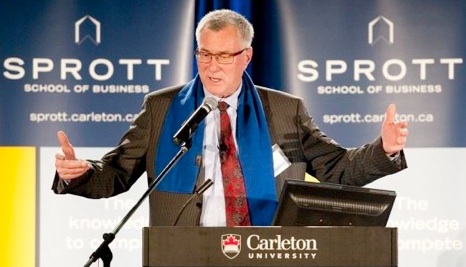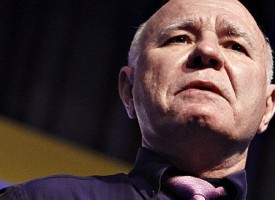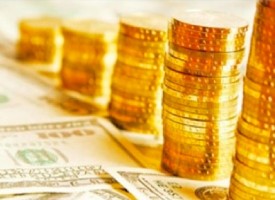Ahead of the Fed Meeting, as we head into the final 8 months of trading in 2023, there is no question we will have hell to pay for the ongoing government intervention in financial markets.
The Consequences Of Intervention
April 27 (King World News) – Alasdair Macleod, head of research at Goldmoney: This article looks at our current economic condition from the viewpoint of classical economics. It is now 87 years since classical economics were dismissed by John Maynard Keynes in his “General Theory of Employment, Interest, and Money”.
Central to Keynes’s opus was a desire to create a role for the state, intervening in economic affairs. In searching for this objective, he had to traduce the law of the markets — Say’s law. We show why this was mistaken. The error has been at the root of the accumulated errors of monetary policies ever since.
It has led to the destruction of the dollar’s purchasing power, reflected in a gold price which has risen from $35 to $2000 — a depreciation of the dollar’s value as a medium of exchange relative to legal, sound money of over 98%. Furthermore, it has weakened America and her allies relative to the rising hegemons who may or may not have a cohesive understanding of economics, but at least are not in thrall to the failed statist policies of the West.
Introduction
The US Government, which is already expected to have a budget deficit this year of over $1.4 trillion, faces a recession. We can predict a recession because M2 money supply which feeds directly into GDP is contracting. And a recession leads into lower tax receipts and higher welfare spending. The deficit will be far larger than $1.4 trillion.
The establishment in charge of monetary policy now faces a difficult problem. It needs to fund a soaring government deficit, which as a department of government is its top priority. Other than taxes there are two sources for this funding, the deployment of savings and the printing of money. It is never really clear where this money comes from: if it comes from savings, then savers divert capital resources from private sector actors to the government, and that is bad news for the productive economy which needs capital resources. If it does not come from savers, then it comes from the expansion of credit from the banking system.
This conventional analysis takes little notice of the origin of bank credit, which is merely created by commercial banks seeking to profit from lending to borrowers for an interest margin. But banks are currently less willing to lend because they are more mindful of risk than they are of opportunities for profit. Furthermore, they are nursing losses on Treasury bond positions because the cost of funding has risen while yields have dropped. And until interest rates fall below government bond yields there is no profit in creating credit to finance government spending.
The only alternative is for the Fed to fund the government’s deficit by reintroducing QE. This is a reversal of current policy, which is to reduce the Fed’s balance sheet by not replacing maturing debt. But there is an ill wind blowing from commercial banks, which appear to have entered a cyclical crisis and might need rescuing as deposits migrate from risky lenders. It could become the excuse for a resumption of QE “to save the economy”.
For all intents, we can now assume that the US Government’s future deficits will be financed increasingly by the Fed. The Fed will also have to pick up the pieces from foreigners no longer willing in aggregate to buy US Treasuries — if anything they are turning into net sellers, creating a Treasury bond glut.
The Fed is left juggling with an anti-bubble. Hitherto, a financial bubble had been fuelling an increase in asset prices and creating a feel-good factor for the investing classes. In this environment, funding government debt was a piece of cake…
This Is Now The Premier Gold Exploration Company In Quebec With Massive Upside Potential For Shareholders click here or on the image below.
The anti-bubble is now fuelling a collapse of both asset values and economic activity in the non-financial economy, together now suffering from the price consequences of monetary inflation and related factors. We had seen investment values rising, leading us to believe that despite short-term difficulties it will work out OK in the end. But the accumulating burden of socialist redistribution, monetary debasement, and the intellectual bankruptcy of governments everywhere is now obvious to anyone with half a mind to observe them. There is only one conclusion: the world is not going to emerge into a state-managed outcome of milk and honey for all. Central to the tragedy is the absence of savings and the discipline on capitalists to repay them. Keynes’s desire for the euthanasia of the saver expressed in his General Theory of Employment, Interest and Money, has finally been achieved, at least in America and the UK. And so has Keynes’s statist replacement for savers in their role as suppliers of capital.
The macroeconomics invented by Keynes denies the role of savings as a fundamental component of free markets. Monetary inflation hides the consequences of this error until they are suddenly sprung upon us. What are they? They can be summed up as an eventual collapse of both the financial asset bubble and the purchasing power of untethered money whose only virtue is faith in the state and its finances. It is a collapse which is becoming increasingly apparent.
Denying the laws of the markets
The root of Keynes’s misconceptions was his desire to create a justification for the state’s intervention in the economy. In order to do so he had to dismiss free market capitalism, and with it the central tenet of classical economics — Say’s law. This problem occupied his mind in the 1930s, and he could not dismiss it convincingly. But he had to for his General Theory, published in 1936 to make apparent sense. In that seminal work, his references to Say’s law were only two in number, both of them early on in the General Theory so that he could develop his thesis in the rest of the book.
Keynes’s is one example of arguments based on endeavours by his contemporaries to escape the strictures of Say’s law in an attempt to progress economics beyond its classical origins and justify a role for the state. He takes to task the theory that he describes as “…Say’s law, that the aggregate demand price of output as a whole is equal to its aggregate supply price for all volumes of output…”by misconstruing the concept. Note that the central element of the division of labour, which is what it is all about, is missing from Keynes offhand dismissal: that is to say the vital role of money and especially of prices to link production with demand.
Jean-Baptiste Say never condensed what was subsequently ascribed to his name into a short aphorism. Instead, he wrote a book, Traité d’Économie Politique, first published in 1803, which by its sixth edition had almost doubled in length. His skill was to describe in terms accessible to the reading public the principles of free markets and sound money, and why they delivered economic progress. He explained it in the context of individuals and their interaction, despising the manipulation of people for social engineering. Like the Austrian School that later emerged following Carl Menger from the 1870s, he convincingly demolished the cost theory of labour and mathematical economics. Murray Rothbard put it this way:
“In a surprising and perceptive prefigurement of modern controversies, Say goes on to explain why the logical deductions of economic theory should be verbal rather than mathematical. The intangible values of individuals, with which political economy is concerned, are subject to continuing and unpredictable change: “subject to the influence of the faculties, the wants and the desires of mankind, they are not susceptible of any rigorous appreciation, and cannot, therefore, furnish any data for absolute calculations”. The phenomena of the moral world, noted Say, are not subject to strict arithmetical computation.”
But Keynes was a mathematician, rather than an economist, failing to understand the human element. Another important factor ignored by Keynes was time. A business has to make payments ahead of its sales. It has to buy materials and assemble the other factors of production. It has to pay suppliers, including the acquisition of higher levels of production; all this in advance of selling a single unit of output. To equate, as Keynes appeared to do, today’s sales with today’s consumption is wrong, because a business has to pay its employees ahead of their production being realised, for which it requires credit.
We cannot know the full extent of Keynes’s reading, and Rothbard wrote the second volume of his History of Economic Thought (quoted from above) decades after Keynes’s General Theory. But clearly, Say’s observations were chalk to Keynes’s cheese, disproving everything that followed on from Keynes’s denial of what had become a cornerstone of free market economics.
The concept of the division of labour was only part of Say’s Traité. In Say’s law, we have extracted a truism, that over the longer term, and not Keynes’s implied immediacy, there must be a balance between what is produced and what is consumed. We work with our specialised skills to maximise our output so that we can acquire those goods and services that we need and desire. To allege, as Keynes did, that this is the same as “that the aggregate demand price of output as a whole is equal to its aggregate supply price for all volumes of output” arrives at the wrong conclusion by skating over the relevant factors. Central to Say’s actual argument was that changes in demand would lead to surpluses of some commodities and shortages of others, which would, left to markets, correct themselves through the price mechanism — that’s one reason why it is nonsense to ignore the role of money and prices. A fall in some commodity and goods prices would create unemployment, that much is obvious. But left to themselves, in free markets unemployment and the opportunities created elsewhere would always correct this situation over time. It is part and parcel of how free markets evolve to meet the needs and wants of consumers…
ALERT:
This company is about to start drilling what could be one of the largest gold discoveries in history! CLICK HERE OR ON THE IMAGE BELOW TO LEARN MORE.
Government intervention is therefore undesirable and unnecessary and can only hamper the market’s natural tendency to adjust to an ever-changing situation, which is the condition necessary for progress. In denying Say’s law, Keynes was misleading us by claiming that a short-term adjustment problem was the same as an absolute condition.
Furthermore, the division of labour requires capital resources, including labour itself, without which it cannot deliver its potential.
As a mathematician Keynes showed little or no understanding of deductive aprioristic reasoning. Instead, he demonstrated a bias against the “unearned” income of the idle rich living off the interest on their capital. But the role of savings was fully addressed by Say. He explained why capital as a fund of savings naturally earns interest. Capital is a tool of business and must be carefully calculated. Just as commodities have a price, and labour its wages, the time-use of capital comes at a cost, and that cost, its freely set interest rate, is an integral part of functioning markets.
Savings as a source of capital are needed by entrepreneurs, who are prepared to bid up for them having estimated in their business calculations what rate of interest is affordable to them. This is not the usurious assumption that Keynes appears to have attributed to greedy work-shy capitalists withhold their spending, thereby restricting output potential. Furthermore, Keynes’s mathematical macroeconomics has driven us down a blind alley whose endpoint is now reached.
His paradox of thrift is such a case. Defer current consumption by saving and you have less consumption; therefore, do away with savings to enhance consumer demand. Simply put, that was the ill-informed level of his and his followers’ thinking. It was the same with interest rates. But zero, and even negative interest rates in some places have destroyed the utility of savings as a source of finance for businesses.
The belief that lowering interest rates stimulates production and consumption has been found wanting. Instead, we have potentially unlimited quantities of fiat currency, which over time undermines the dollar’s purchasing power. And this condition is true of all the developed world’s major fiat currencies as well: the euro, yen, sterling, Swiss franc, and allied currencies.
The fundamental error behind inflationary financing
In a free market economy with sound money acting as the intermediary role in the division of labour, some consumption must be put aside to provide one of the forms of capital assembled by businesses anticipating consumer demand trends. It is part and parcel of how markets allocate economic resources. The point is that the source of progress in mankind’s condition is the deferment of a portion of consumption. We can confirm this with the evidence: a savings driven economy, such as Germany and Japan in the post-war decades and China today creates wealth for its citizens, while those nations that discourage and destroy savings underperform. And if it was not for the ability of their people to work around their spendthrift governments’ policies of discouraging saving, these economies would have seen the same level of progress as that idealistic beacon for card-carrying socialists of an earlier generation, the USSR and Maoist China.
All reasoning and the evidence inform us that saving is a vital element of economic progress and cannot be replaced by unbacked credit expansion without unintended consequences. Keynes’s dismissal of that truth is entirely responsible for the decline in living standards of spendthrift nations relative to those that save. Today, it has led to America losing its power over rival savings-driven nations. By way of contrast, in little more than three decades, China has evolved on the back of an extraordinary level of savings to challenge spendthrift America, both in terms of the totality of its economy and its technological advancement. America’s response is to further her own economic destruction through a combination of an unwinnable financial war to secure continuing international debt funding for itself, a trade war to make her own consumers pay higher prices for Chinese and other sourced imports, and the acceleration of monetary inflation to pay for her military activism.
He who calls the tune eventually has to pay the piper. The neo-Keynesianism that evolved from the denial of Say’s obvious truths in the early pages of Keynes’s General Theory has turned out to be little more than a scam to invent a role for government intervention. It is the fallacy behind this interventionism and its consequences which we are now being exposed…
To Find Out Which Uranium Company Is Positioning Itself To Become A Powerhouse In Nevada Click Here Or On The Image Below.
The inability of the state to direct economic resources
Jean-Baptiste Say described the role of savings and how individuals, or their agents, by deciding what to do with them provided the capital to finance production. Capital is always a scarce commodity which requires an interest compensation to savers for both time preference, lending risk and in these times of fiat currencies an additional premium to reflect anticipated changes in purchasing power. And without statist comfort blankets, businesses which planned to make profits on their ventures were generally quick to rectify their mistakes to limit losses on their invested capital.
Statist intervention has removed this discipline. Businesses and consumers learned that credit was no longer scarce. Through credit inflation, a business whose funding benefited from suppressed bond yields knows it benefits additionally from the transfer of wealth to it from the lender, reflected in higher prices for its products in due course. It is by creating this effect that central banks believe they can stimulate production. But it is a fraud on savers, who, naturally decide to take equity in businesses directly that benefit from inflationary financing in preference to holding bank deposits and fixed interest debt.
Today, in economies such as the US, UK and much of that of the EU, traditional savings for interest play a minor part in providing capital for producing businesses. Instead, capital is increasingly sourced through monetary inflation and by the inflation of bank credit. While banks make commercial assessments in their lending, central banks and other government agencies cannot make commercial judgements.
Not only are they unequipped to do so, but they are driven by political considerations which give little or no weight to business calculation. They make the mistake of regarding GDP as the sole indicator of their success. But GDP is just a transaction total over a given time period and is only increased by credit expansion. It does not quantify the economic benefits of those transactions. GDP includes government spending, spending which in the aggregate detracts from economic value to consumers by taking away their wealth and imposing state monopolies upon them instead.
Spendthrift governments have increasingly taken it upon themselves to finance virtually all economic liabilities which are not being financed by commercial banks. Consequently, the direction of inflated money is inevitably aimed at supporting government and political interests to the detriment of a free-market economy dedicated to serving the consumer. Zombie corporations, which employ large numbers of workers inefficiently, making and supplying products not driven by consumer demand are in the front line for handouts, because politicians are more interested in job preservation than commercial advancement. Bankers buy political influence with donations to protect the privileges afforded to them by their banking licences. And the supposed stimulus generally fails to reach the bulk of businesses, the unvoiced small and medium size enterprises which make up a Pareto 80% of any advanced economy.
The lack of understanding by statist economists and forecasters that imbalances between production and consumption are the inevitable consequence of monetary expansion, is also evidenced in their belief that a rise in the general level of prices is impossible in a contracting economy. But Say’s law proves otherwise.
Say’s law explains why prices do not decline in a recession
It should be noted that in a free market economy, any unemployment is a temporary condition, because labour is a capital resource demanded for production. If labour is not demanded by one industry, it will be demanded by another. This is part of the natural process of market evolution.
If the general level of unemployment rises, it is due directly or indirectly due to government meddling, including the manipulation of credit. If, as a consequence of this meddling there arises a degree of permanency in unemployment levels, it stands to reason that it will not be due to labour being shaken out of production of unwanted goods, but from employment of production more generally…
ALERT:
Billionaire mining legend Pierre Lassonde has been buying large blocks of shares in this gold exploration company and believes the stock is set to soar more than 150% in the next 6 months. To find out which company CLICK HERE OR ON THE IMAGE BELOW.
 Sponsored
Sponsored
Modern neo-Keynesians and even the monetarists assume that when there are high levels of unemployment, demand for goods is destroyed. They posit that maintained earnings in aggregate are required to absorb the supply of goods and services. Therefore, in a recession or a slump, the general level of consumer prices will decline. Fuelling this embedded belief is the experience of the 1930s depression, when the general level of prices declined materially.
Other evidence to the contrary is ignored, such as the stagflation conditions in the 1970s, when despite rising interest rates and persistently high unemployment, prices inflated at elevated levels, most notably in the UK. And in every currency collapse, the destruction of employment did not stop prices rising at accelerating rates.
The incorrect assumption in all neo-Keynesian analysis is that the value of the medium of exchange is constant. The reason prices appeared to fall in the 1930s was not due to a general glut, but an increasing purchasing power of the medium of exchange — the dollar firmly tied to a gold standard at first $20.67, and then at $35 from early-1934. Why did this happen? It was simply due to a vicious contraction of credit based on sound money, brought about by the collapse of a credit bubble fuelled by the Fed under the leadership of Benjamin Strong. It was the previous statist monetary intervention that led to the depression.
Under first President Herbert Hoover and then Franklin Roosevelt, the state intervened in every way it could to end the depression. But empirical evidence strongly suggested that if the US Government had adopted a hands-off policy, the slump would have ended in only a year or two instead of lasting a whole decade. Instead, free markets wrongly got the blame.
As to the modern belief that prices fall in a recession, it ignores the simple fact that demand destruction from rising unemployment also leads to the destruction of production. Not only do consumers spend less in aggregate, but they also produce less. This is the unarguable evidence from Say’s law.
The increase in interest rates is not over
Another Keynesian fallacy is that in a slump, demand for monetary capital declines, leading to lower interest rates. They attempt to prevent the fall in demand for capital by suppressing interest rates, and more recently through quantitative easing.
As well as reflecting lending risk, interest rates are principally determined by time preference, counterparty risk, and currency risk. Time preference was explained by Say’s slightly older contemporary, Turgot, and later by Eugene Böhm-Bawerk of the Austrian school. But the writings of these economists were during a regime of gold and silver standards; that is to say, credit was firmly anchored to internationally recognised corporeal money without counterparty risk and changes in purchasing power were not generally an issue…
This Company Has A Massive High-Grade Gold Project In Canada And Billionaire Eric Sprott Has A Huge Position! To Learn Which Company Click Here Or On The Image Below.
But today we have fiat currencies, and by incorporating their anticipated future purchasing power in a bundled time preference, we can see how evolving expectations of currency debasement now dominate the interest rate outlook. The subject is of particular interest to marginal holders of a fiat currency, notably foreigners who do not require it for day-to-day transactions, other than international trade settlement and commodity acquisition. Thus, a foreigner requiring dollar balances to fund purchases in international markets will assess the future purchasing power of dollars held excess to his business requirements and will sell them if the interest earned is insufficient to satisfy his time preference.
In recent months, another factor setting interest rates has emerged. The growth in US bank credit slowed and is now contracting — mirrored elsewhere. A growing shortage of bank credit at a time of increasing demand for it simply leads to higher interest rates. It all points to interest rates paid on deposits having to rise in order to compensate holders for the prospect of a deterioration of purchasing power, and any attempt by the Fed to suppress interest rates and bond yields will consequently lead to the dollar being sold down on the foreign exchanges. When foreign holders of dollars drive a run on the currency, further rises in interest rates becomes inevitable.
So far, with some $30 trillion in deposits, T-bills and longer-term financial assets, a real run on the dollar has yet to begin, but there is mounting evidence of the danger. And while the dollar has lost some ground against other currencies in the last year, a further deterioration in its purchasing power is bound to become manifest in energy and commodities priced in dollars. With the dollar and related currencies declining in value, foreigners will almost certainly dump dollars for oil, copper, and physical gold which is legal money.
The growing realisation that their purchasing power is being eroded, rather than prices rising, tells us that excess holdings of currencies will be dumped by everyone unless interest paid compensates them sufficiently. And businesses facing a credit squeeze are bound to liquidate deposits in currencies other than the currency in which they record their accounts. Initially, it is foreign depositors who awaken to the transfer of their wealth to debtors and their governments through currency inflation. It so happens that the most exposed currency held by foreigners accounting in a different base currency is the dollar. Before resident Americans realise that they too should reduce their currency and credit exposure to a bare minimum, the dollar’s purchasing power will have declined significantly, measured against everything. Markets will then be wholly in charge of events, discrediting central banks and their governments. Interest rates will soar.
Bubbles are popping and will continue to do so. The repricing of government bonds, naïvely regarded by banks, investors, and regulators as being the ultimate safe haven is already threatening the existence of over-leveraged banks. And since the whole financial system has been inflated by a limitless expansion of money, the risk is then of a combined financial asset and currency collapse.
If only Keynes had understood what Say was getting at, abandoned his General Theory and instead promoted sound money, minimal state intervention and free markets, we would not be in this mess. But once a statist, Keynes was always a statist, and we cannot put the clock back.
ALSO JUST RELEASED: This Will Unleash Silver To All-Time High But Don’t Forget About Key Commodity CLICK HERE.
ALSO JUST RELEASED: An Inflationary Depression Is Being Unleashed CLICK HERE.
ALSO JUST RELEASED: Miners To Have A Golden Wave This Earnings Season But Look At What Is Plunging CLICK HERE.
ALSO JUST RELEASED: Art Cashin Just Warned About VIX But Look At What Is Already Collapsing CLICK HERE.
ALSO RELEASED: The 1930s Great Depression: Is History Set To Repeat? CLICK HERE.
ALSO RELEASED: Silver On Cusp Of Major Upside Breakout As Gold Approaches $2,000 Level Again CLICK HERE.
ALSO RELEASED: There Are So Many Signs Of Financial Disaster Across The World CLICK HERE.
© 2023 by King World News®. All Rights Reserved. This material may not be published, broadcast, rewritten, or redistributed. However, linking directly to the articles is permitted and encouraged.











